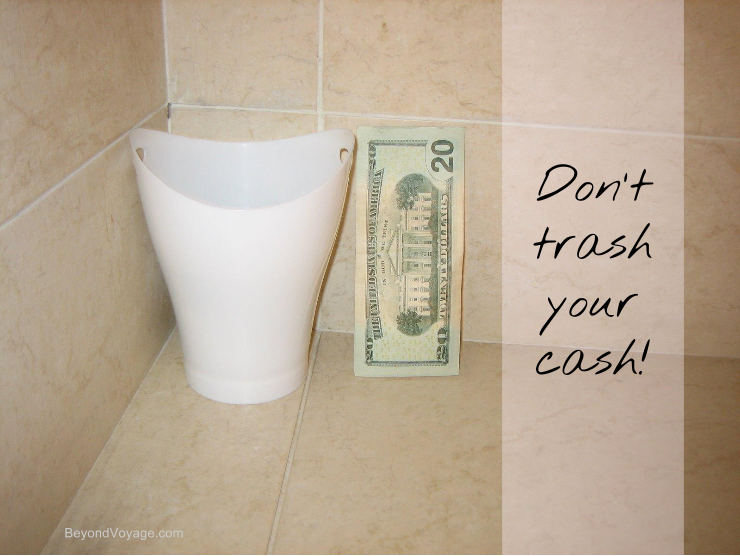US Dollars are currently scarce in Argentina due to the government's tough currency exchange restrictions, intended to help the struggling peso and to discourage citizens from spending their money outside of Argentina.
The result? Two exchanges - the official exchange rate from banks and ATMs, and the black market rate also called the "Blue Rate" or "Dollar Blue" which can be obtained from unofficial traders. For example, you might get 7.80 pesos for $1USD using the official rate but you'd get 11.40 pesos for $1USD using the blue rate. As you can see, the savings are significant. Although the blue rate is technically illegal, it's published in Argentina's newspapers, many news outlets report the blue rate when talking about the official rate, and travelers and locals alike regularly take advantage of the discounted rate.
Finding Unofficial Traders
In order to exchange money using the blue rate, you must find unofficial traders. Your best bet is if you know someone in Argentina who can direct you to a trusted unofficial trader. If that isn't an option, seek out a tour operator online before you arrive or ask your hotel to recommend a "cueva" (it literally means cave, but it's really a functioning exchange business). If that doesn't work, there will be people in the street yelling "Cambio!". While this should be a last resort, you can ask them about their exchange rate and compare it to the published blue rate & official rate.
Whether you exchange with unofficial or official traders, there is always a risk you'll get scammed. Make sure you count your money, calculate the exchange and get them to agree on the trade amount BEFORE you hand your cash to the trader. There is also a small chance you might get counterfeit notes, so inspect your bills for signs of forgery.
Changing Pesos Back
When changing your pesos back to your home currency, you get a better rate on the official market than with the blue rate. However, it's harder to find official traders in Argentina who will take pesos for USD (or EUR/GBPs). You are more likely to be able to trade your pesos once you leave the country. If possible, research beforehand and identify a currency exchange outside of Argentina that trades at the official rate.
Arbitrage
This dual exchange rate presents an arbitrage opportunity assuming you have left over cash after your trip. For example, say you bring $1,000USD and trade it at the blue rate quoted above for 11,400 pesos. If you were to immediately come home and trade your pesos at the official rate you'd get back $1,460USD, resulting $460USD in profit. Now before you start thinking this is a way to make a lot of easy money, remember that you can't carry around anything over $10,000USD, otherwise you'd have to declare it. And I really wouldn't recommend carrying around a ton of cash anywhere, especially in a foreign country.
A Word of Warning
Argentina's currency is extremely volatile so keep a close eye on the exchange rate right before you leave and during your trip. This currency has collapsed before and it may happen again. Keeping this in mind, it may be wise to exchange only as much as you'll need on your trip. The last thing you want is to return home with a bunch of pesos only to find out that the currency is worthless.
Now that you know how to save money during your next visit to Argentina, how will you spend your extra cash?
Planning a trip to Argentina? Check out our recommendations.




 RSS Feed
RSS Feed
